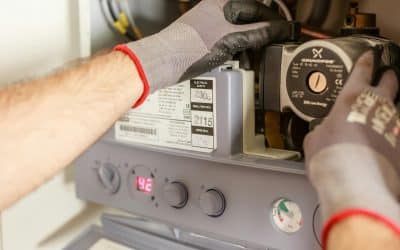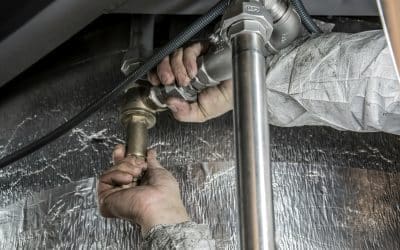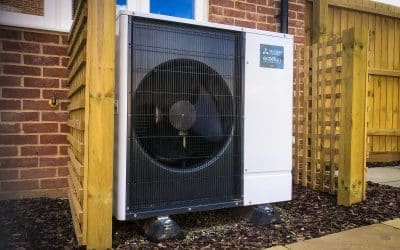Applying sufficient layers of insulation can save you a considerable amount of money not to mention it is environmentally-friendly as well. Simply insulating the external walls of your home is not enough. Different parts of your home will require different types of insulation and frankly, this can be a bit daunting especially when you don’t know where to begin.
To truly make the most of home insulation, you need to have the best heating solutions, and we would highly recommend installing an air source heat pump to maximise its benefits. You can get a free quick quote right here!
In this piece, we have put together a list of the various types of insulation to give you an idea of what more you can do to maximise heatproofing in your home!
Home Insulation – Why Do We Need it?
When your home is uninsulated, you lose a significant amount of heat which means you are consuming more energy to maintain comfortable temperatures. To put things into perspective let’s take a look at the extent of heat you lose overall:
- Heat loss through the roof – 25%
- Heat loss through the walls – 33%
- Heat loss through the floors – 15%
- Heat loss through draughts – 15%
- Heat loss through the windows – 20%
The majority of heat loss takes place through the walls and the roof and it accounts for a whopping 58%. The irony is that these two parts of your home are perhaps the easiest to insulate.
When you look at the percentage of heat loss mentioned above, it’s easy to see why topping up your home with sufficient layers of insulation will be beneficial over the years. What’s more, installing insulation in your home is very straightforward not to mention affordable as well.
Now let’s take a look at the types of insulations you can install.
Loft Insulation
You lose around 3/4th of the total heat in your home through the roof which makes loft insulation super important. Simply applying insulation in this section of your home won’t suffice. You have to make sure that you apply a sufficient layer to reap the benefits of energy-saving.
You’ll find that insulation is available in rolls, batts and in loose bags. An adequately insulated roof will noticeably reduce your fuel bills which means that the central heating system in your home like air source heat pumps or biomass boilers are performing at peak efficiency. When it comes to loft insulation, there is a wide range of options that you can choose from.
For standard loft insulation, the materials are deposited over the joists of the loft and in between as well.
Roof Insulation
If you have converted your loft into a room, you will need to insulate it. You can use rigid insulation boards that can be placed between the foam, the rafters or the loose fill to heatproof the roof. Once this is applied, you can envelop the entire section with plasterboard and decorate it to create the living space you want.
Wall Insulation
Depending on the type of wall you wish to heatproof, there are different types of wall insulation available. Let’s take a look at the primary types of insulation:
- Cavity Wall Insulation
When two walls have a gap or cavity in the middle, insulation has to be applied. Generally, one wall is made of concrete while the other one is made of brick. The gap between the walls means that air escapes through it which lowers the temperature in your home. This makes it rather difficult for you to heat your home comfortably. Using a suitable material, insulation is applied in the cavity wall by filling the gap. Houses that were built post-1920s are more likely to have such walls.
- Internal Wall Insulation
You can insulate the walls internally by using rolls or boards of insulating materials. Owing to the thickness of the wall, this type of insulation will reduce the available floor space you have. You will also have to prepare the brickwork in advance which includes re-plastering existing damages on the wall before insulation can be applied. If for some reason, your wall is not suitable for fitting insulation boards, then you will have to build a stud wall. This will further reduce the size of the room.
Floor Insulation
Empty spaces or gaps in your home let heat escape which makes the central heating system work extra hard leading to more power usage and increased electricity bills. Swathing these gaps in layers of insulation, will add to the energy-efficiency of your heat pumps and save money.
With the floor, there are two types of insulation you need:
- Suspended Floor Insulation
For this, you will have to take out your floorboards and then apply an adequate layer of insulation between the joists. If there’s a basement in your home, you can install rigid boards to its ceiling for added insulation for the room above.
- Solid Floor Insulation
You can use rigid boards to insulate solid floors. Once that’s done, you can install the flooring of your choice on top of this layer. Keep in mind that this will raise your floor level so you’ll have to accordingly make adjustments. Take into account the electrical sockets, doors and skirtings and tweak them to align with the elevated floor level.
Crawl Space Insulation
Using loose-fill insulation or mineral roll, you can insulate the crawlspace in your home. Although, be mindful of the ventilation. If your crawlspace has ventilation, you can use mineral wool but be sure to cover it later. If there’s no existing ventilation, simply insulate the crawlspace walls and leave the floor space above as it is.
Ceiling Insulation
People tend to apply ceiling insulation if their home is being renovated or if its a new build. The main reason behind this is if you want to top the space with a layer of insulation, you will have to take out the entire plasterboard applied on the ceiling. Although, you can avoid doing this if you are insulating a room located above the porch or the garage. You can use rock wool batts, loose-fill, fibreglass or panels to insulate the ceiling in your home.
Final Thoughts
If you wish to reduce your impact on the environment while saving considerably on your heating bills, these various types of insulation will greatly help. What’s more, if you have air source heat pumps installed, you can club it with the mandatory level of insulation and benefit from the domestic RHI scheme.
If you’ve come across glowing air source heat pump reviews and you’d like to know more about it, you can call us today!





